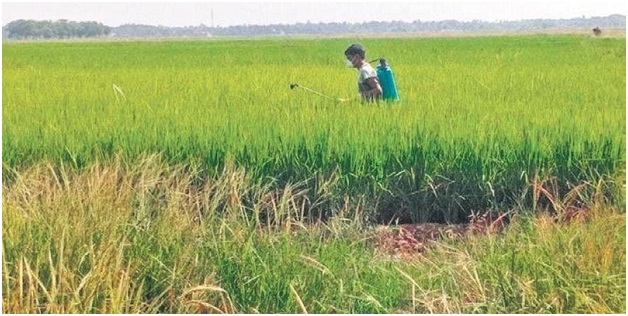Enhancing the Benefits of Research for Basmati Rice in India (Indian Express)

- 19 Sep 2023
Why is it in News?
Over the past three decades, the yearly exports of Basmati Rice have surged from 0.3-0.35 million tonnes (valued at $200-250 million) to 4.5-4.6 million tonnes, with a value of $4.7-4.8 billion.
Transforming the Rice Industry in India:
- Until the late 1980s, Indian farmers cultivated traditional tall basmati rice varieties, which reached heights of 150-160 cm.
- However, these tall plants were susceptible to lodging, bending over when laden with well-filled grains, and they produced a meager 10 quintals of paddy per acre over a lengthy period of 155-160 days, from nursery sowing to harvesting.
- Some of these traditional varieties included Taraori (also known as Karnal Local or HBC-19) and Dehraduni (Type-3).
- The turning point occurred when the Indian Agricultural Research Institute (IARI) introduced Pusa Basmati-1 (PB-1), an improved variety released in 1989.
- By the early 21st century, India was exporting 0.6-0.7 million tonnes of basmati rice, generating annual revenues of $400-450 million, with PB-1 accounting for approximately 60% of this success.
Evolution of the Rice Sector in India:
- The first significant change occurred with the introduction of Pusa Basmati-1 (PB-1), which led to a doubling of India's basmati exports.
- However, the true transformation took place in 2003 when Pusa Basmati-1121 (PB-1121) was released.
- PB-1121's standout feature was its grain quality: each kernel averaged 8 mm in length but elongated 2.7 times to approximately 21.5 mm when cooked.
- One cup of milled PB-1121 grains yielded 4.5 cups of cooked rice, compared to 4 cups for PB-1 and 3.7 cups for Taraori.
- Following the introduction of PB-1121, India's basmati rice exports surged from 0.7 million tonnes to 3.7 million tonnes and from $390 million to $4.9 billion in value terms between 2001-02 and 2013-14.
- Another significant development occurred in 2013 when the IARI released Pusa Basmati-1509 (PB-1509).
- PB-1509 had a shorter seed-to-grain duration of just 115-120 days, making it advantageous for farmers as they could cultivate an extra crop.
- After harvesting PB-1509, farmers began adopting various crop combinations, including planting a three-month potato crop in early October, followed by sunflower, sweet corn, or onion in early January, all of which matured in 90-100 days.
Enhancing Disease Resistance in Basmati Rice:
- In recent years, scientists at IARI have been dedicated to safeguarding the improved yield of their basmati varieties by introducing genes for disease resistance.
- An example is PB-1121, which became vulnerable to bacterial leaf blight. To combat this, IARI introduced Pusa Basmati-1885 and Pusa Basmati-1847.
- These varieties were essentially PB-1121 and PB-1509 but equipped with "built-in resistance" to both bacterial blight and rice blast fungal disease.
- The incorporation of resistance traits through marker-assisted backcross breeding eliminates the need for farmers to use fungicides.
- This reduction in the application of crop protection chemicals not only promotes sustainable farming but also preserves the premium reputation of Indian basmati in the global market.
Challenges Faced by Basmati Rice:
- Basmati Rice encounters two primary challenges:
- Lack of Minimum Support Price (MSP): Unlike other crops, basmati paddy does not have a minimum support price (MSP) established by the government, which can affect the income security of farmers.
- Export Dependency: The majority of basmati rice is exported, with a limited domestic market. This export-centric nature exposes farmers to market fluctuations and government export policies.
- For instance, the Union government recently imposed restrictions, disallowing basmati shipments priced below $1,200 per ton.
India's Rice Exports in 2023:
- India holds the title of the world's largest rice exporter, commanding a substantial 45% share of the global rice market.
- During April-May 2023, the nation's rice exports surged by 21.1% compared to the same period in the previous fiscal year.
- In May 2023, the export of Basmati rice experienced a notable increase of 10.86% compared to its exports in May 2022.
- Non-Basmati rice shipments have been consistently growing for the past three years, and the export of Basmati rice in 2022-2023 exceeded the figures of the previous year.
- Government data up to August 17, 2023, reveals that total rice exports (excluding broken rice) reached 7.3 million tonnes, marking a 15% increase compared to the 6.3 million tonnes exported during the corresponding period last year.
